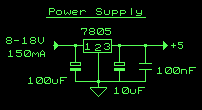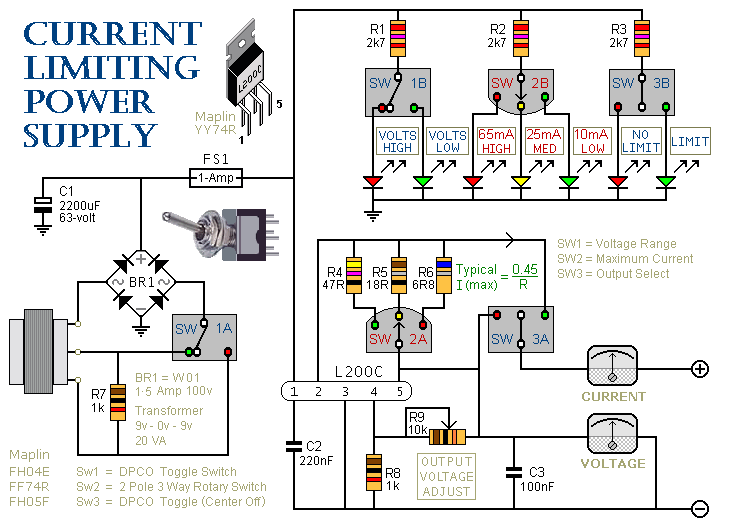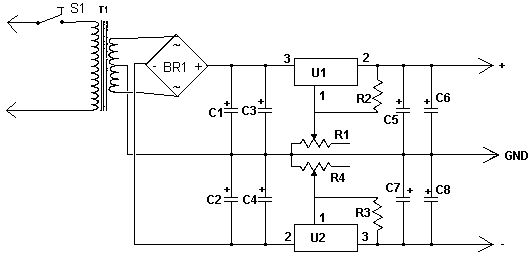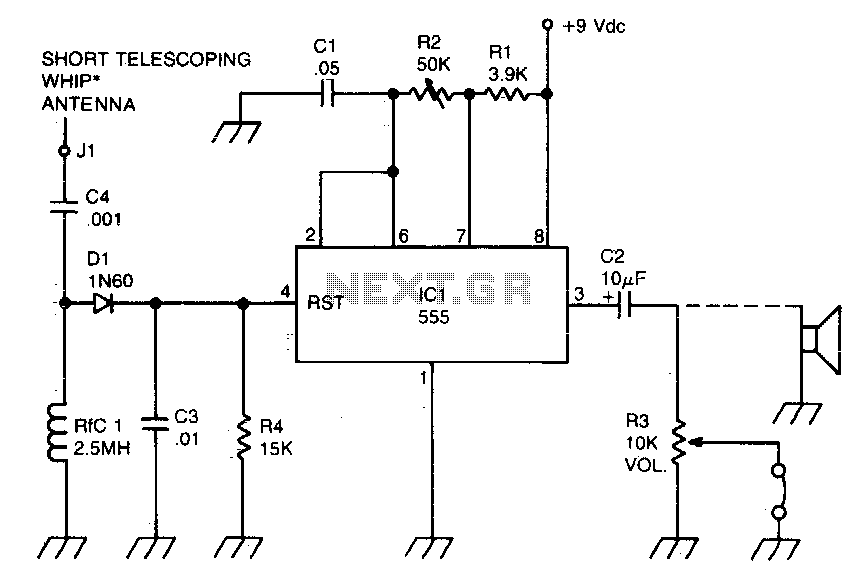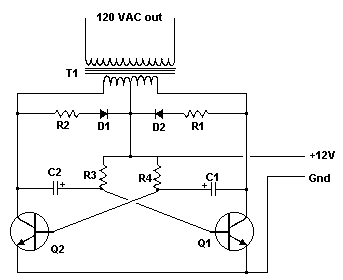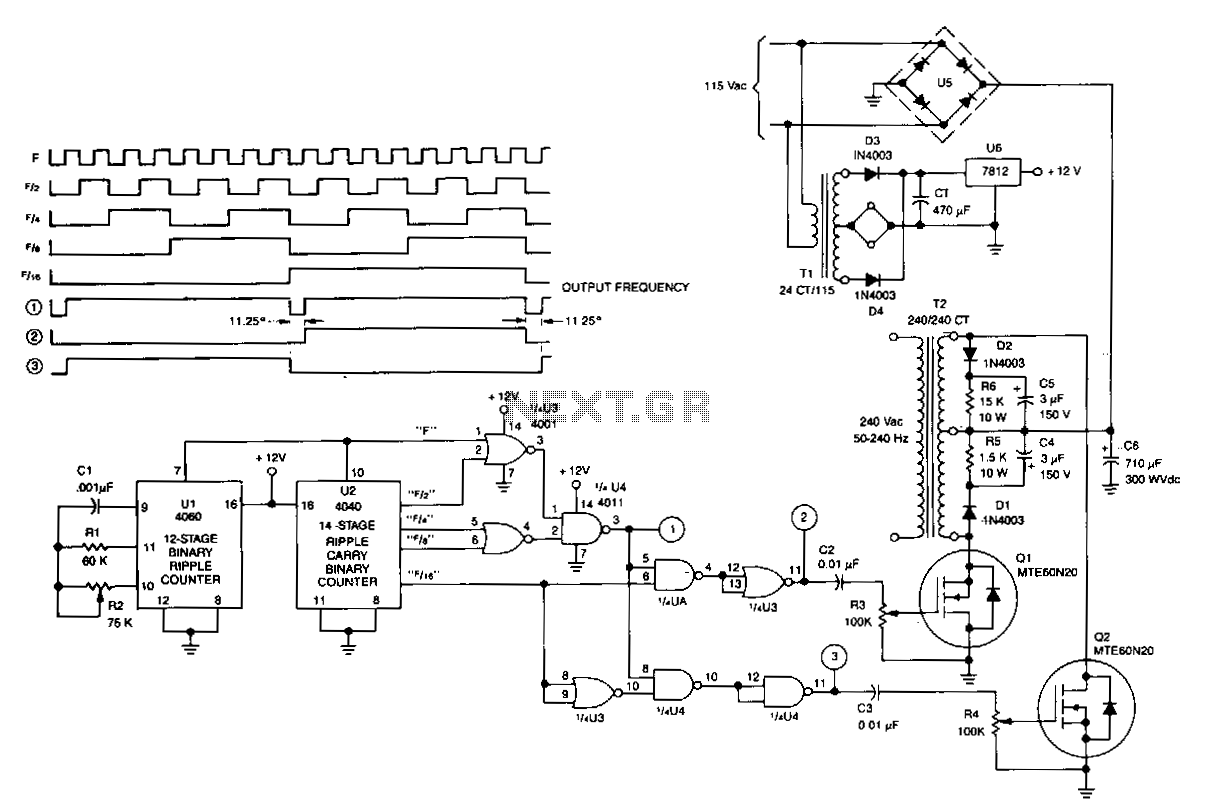
About a PWM power inverter
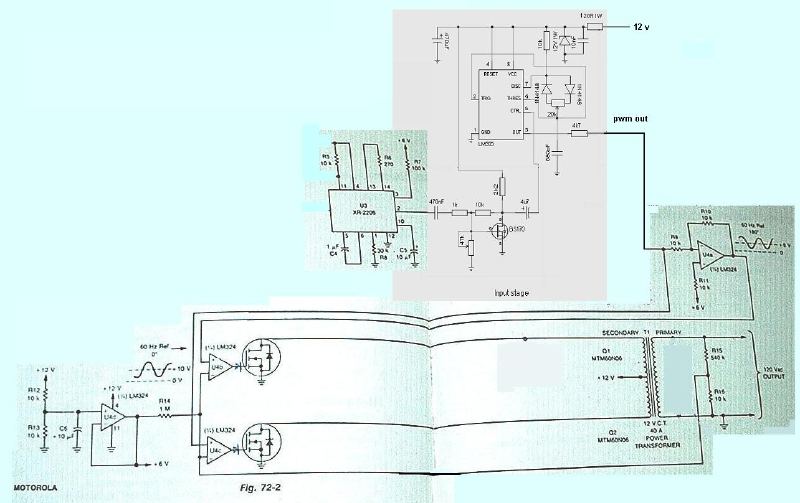
A few months ago, a search was conducted for an easy-to-build PWM inverter that does not require any PIC programming. The investigation led to a consideration of a 555 PWM amplifier circuit.
The 555 timer IC is widely used in various applications, including PWM (Pulse Width Modulation) generation. In constructing a PWM inverter using a 555 timer, the circuit can be simplified to avoid the complexities associated with microcontroller programming.
To create a basic PWM inverter circuit, the 555 timer is configured in astable mode, allowing it to generate a continuous square wave output. The frequency and duty cycle of the PWM signal can be adjusted by varying the resistors and capacitors connected to the timer.
The output of the 555 timer can drive a transistor or a MOSFET, which acts as a switch to control the power supplied to the load. The inverter circuit can then convert a DC input voltage into an AC output voltage, suitable for powering various devices.
Additional components such as diodes for flyback protection, capacitors for filtering, and inductors may be included to improve the performance and stability of the inverter. Proper heat dissipation measures should also be considered when selecting the switching components to ensure reliability during operation.
This approach to building a PWM inverter using a 555 timer provides a straightforward solution for those seeking to implement an inverter without the need for programming or complex circuitry.Hello I was, since few months, looking for an easy to build PWM inverter, and without any PIC programing. Looking at a 555 PWM amp circuit, I have an.. 🔗 External reference
The 555 timer IC is widely used in various applications, including PWM (Pulse Width Modulation) generation. In constructing a PWM inverter using a 555 timer, the circuit can be simplified to avoid the complexities associated with microcontroller programming.
To create a basic PWM inverter circuit, the 555 timer is configured in astable mode, allowing it to generate a continuous square wave output. The frequency and duty cycle of the PWM signal can be adjusted by varying the resistors and capacitors connected to the timer.
The output of the 555 timer can drive a transistor or a MOSFET, which acts as a switch to control the power supplied to the load. The inverter circuit can then convert a DC input voltage into an AC output voltage, suitable for powering various devices.
Additional components such as diodes for flyback protection, capacitors for filtering, and inductors may be included to improve the performance and stability of the inverter. Proper heat dissipation measures should also be considered when selecting the switching components to ensure reliability during operation.
This approach to building a PWM inverter using a 555 timer provides a straightforward solution for those seeking to implement an inverter without the need for programming or complex circuitry.Hello I was, since few months, looking for an easy to build PWM inverter, and without any PIC programing. Looking at a 555 PWM amp circuit, I have an.. 🔗 External reference
